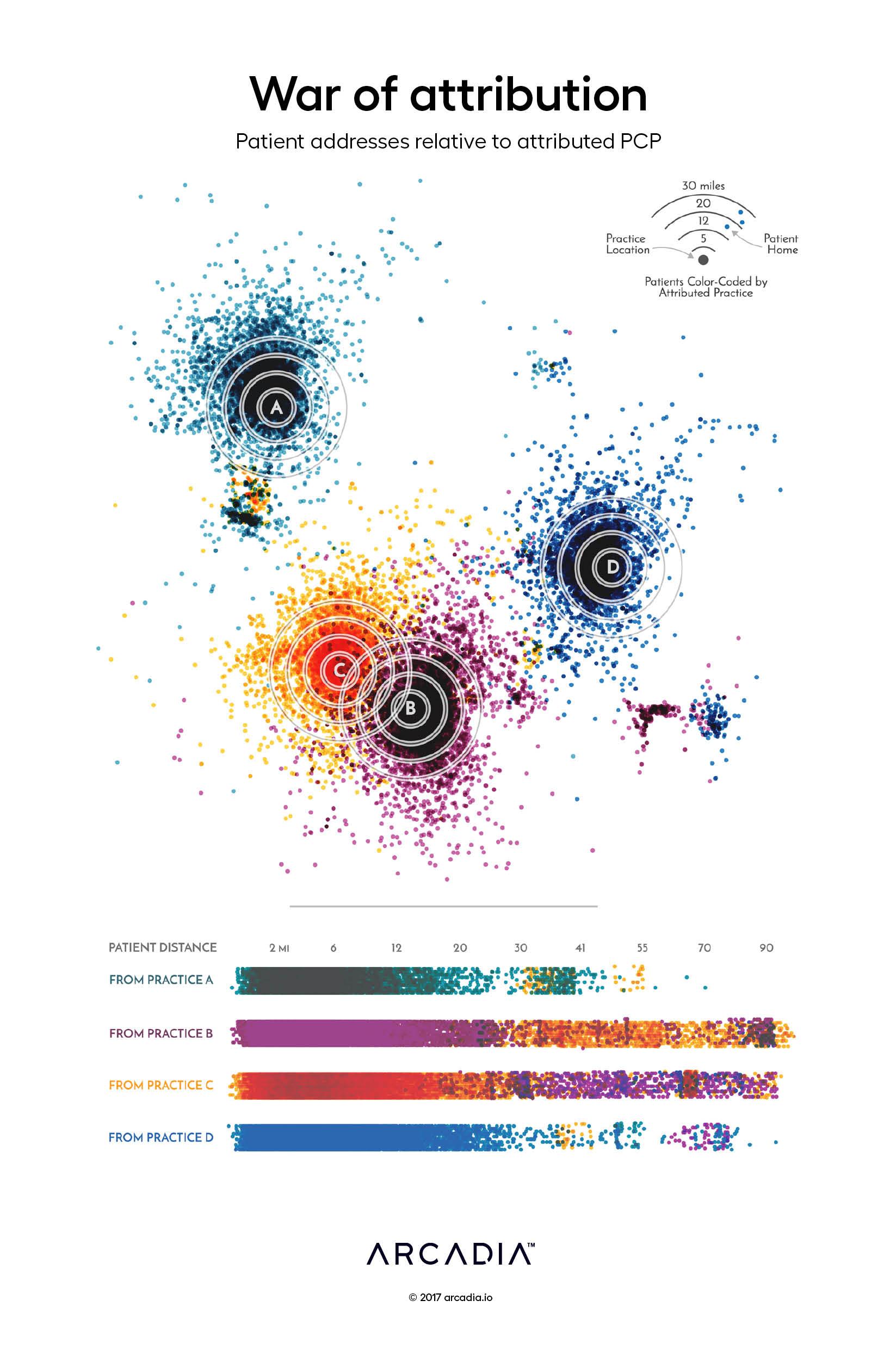War of attribution: Patient addresses relative to attributed PCP

Provider attribution is fraught with unknowns. Sometimes, the patient chooses the provider, sometimes the choice is made for them. Sometimes, the provider is referred by a close and trusted resource, sometimes a name is picked randomly from a website. However, one factor — location — key to making choices in so many other fields seems often hidden from view, even as it can have a strong impact on patient engagement.
In this figure, the artists place the providers and their assigned patients (quite literally) on a geographic plane, laying bare the distance between them. Based on real data for 38,000 patients in an urban center, the four practices and their patients are color-coded to show their affiliation.
In the top section of the map, rotated and skewed to de-identify patients and providers, we see that most patients remain in fairly close proximity to their assigned providers. However, bursts of contrasting colors hint at the presence of patients with different allegiances.
The disruption of the correlation with distance becomes more evident at the bottom of the figure, as all patients within 90mi of a practice are presented along with the color of their attributed practice, revealing the close mix in assignments. How might patient engagement vary if a practice could bring in those closer-lying patients? How could a practice improve their outreach efforts to more effectively manage care for their further out patients?
Effective management of a community of patients demands a holistic view of patients’ lives; understanding the effect of distance, like many facets of this broader view, are only as far away as the data.
Details
D3.js SVG, with Illustrator
Data sourced from Arcadia Benchmark Database with multiple EHR and Claims datasets
